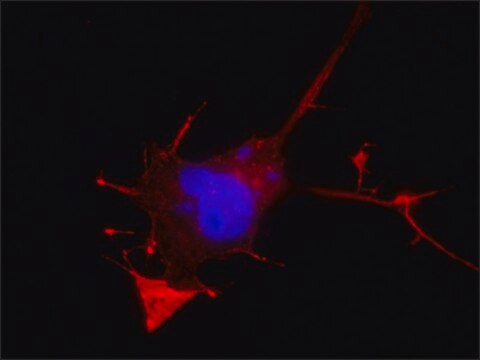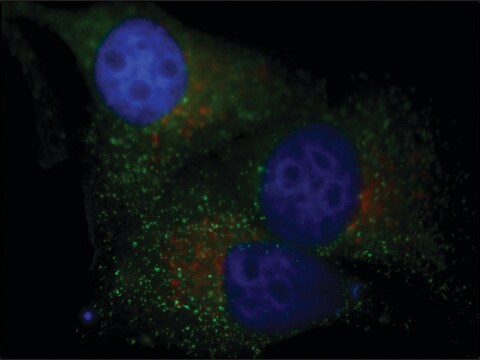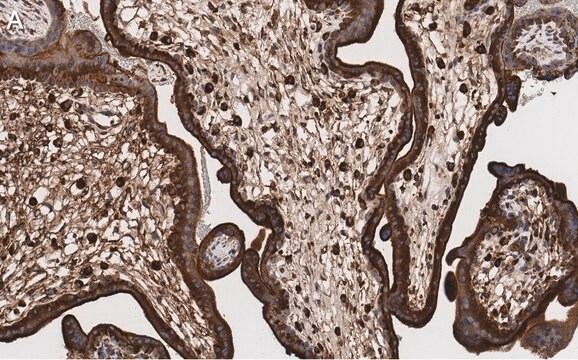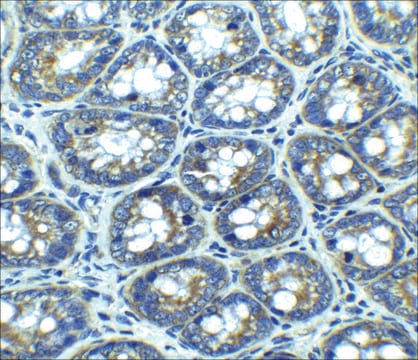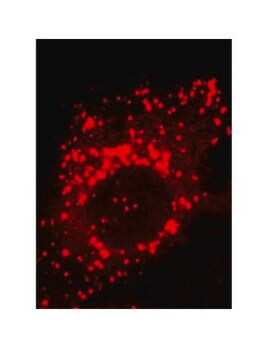428017
Anti-Lamp1 Mouse mAb (LY1C6)
liquid, clone LY1C6, Calbiochem®
Synonym(s):
Anti-Lysosome-Associated Membrane Protein 1
About This Item
Recommended Products
biological source
mouse
Quality Level
antibody form
purified antibody
antibody product type
primary antibodies
clone
LY1C6, monoclonal
form
liquid
contains
≤0.09% sodium azide as preservative
species reactivity
rat
manufacturer/tradename
Calbiochem®
storage condition
OK to freeze
avoid repeated freeze/thaw cycles
isotype
IgG1
shipped in
wet ice
storage temp.
−20°C
target post-translational modification
unmodified
Gene Information
rat ... Lamp1(25328)
General description
Immunogen
Application
Immunocytochemistry (1:100)
Immunofluorescence (see comments)
Immunoprecipitation (see comments)
Packaging
Warning
Physical form
Reconstitution
Analysis Note
CHO-K1 cells
Other Notes
Rohrer, J., et al. 1996. J. Cell Biol. 132, 565.
Howe et al. 1988. PNAS85, 7577.
Lewis et al. 1985. J. Cell Biol.100, 1839.
Legal Information
Not finding the right product?
Try our Product Selector Tool.
Storage Class Code
10 - Combustible liquids
WGK
WGK 1
Flash Point(F)
Not applicable
Flash Point(C)
Not applicable
Certificates of Analysis (COA)
Search for Certificates of Analysis (COA) by entering the products Lot/Batch Number. Lot and Batch Numbers can be found on a product’s label following the words ‘Lot’ or ‘Batch’.
Already Own This Product?
Find documentation for the products that you have recently purchased in the Document Library.
Articles
Autophagy is a highly regulated process that is involved in cell growth, development, and death. In autophagy cells destroy their own cytoplasmic components in a very systematic manner and recycle them.
Our team of scientists has experience in all areas of research including Life Science, Material Science, Chemical Synthesis, Chromatography, Analytical and many others.
Contact Technical Service

